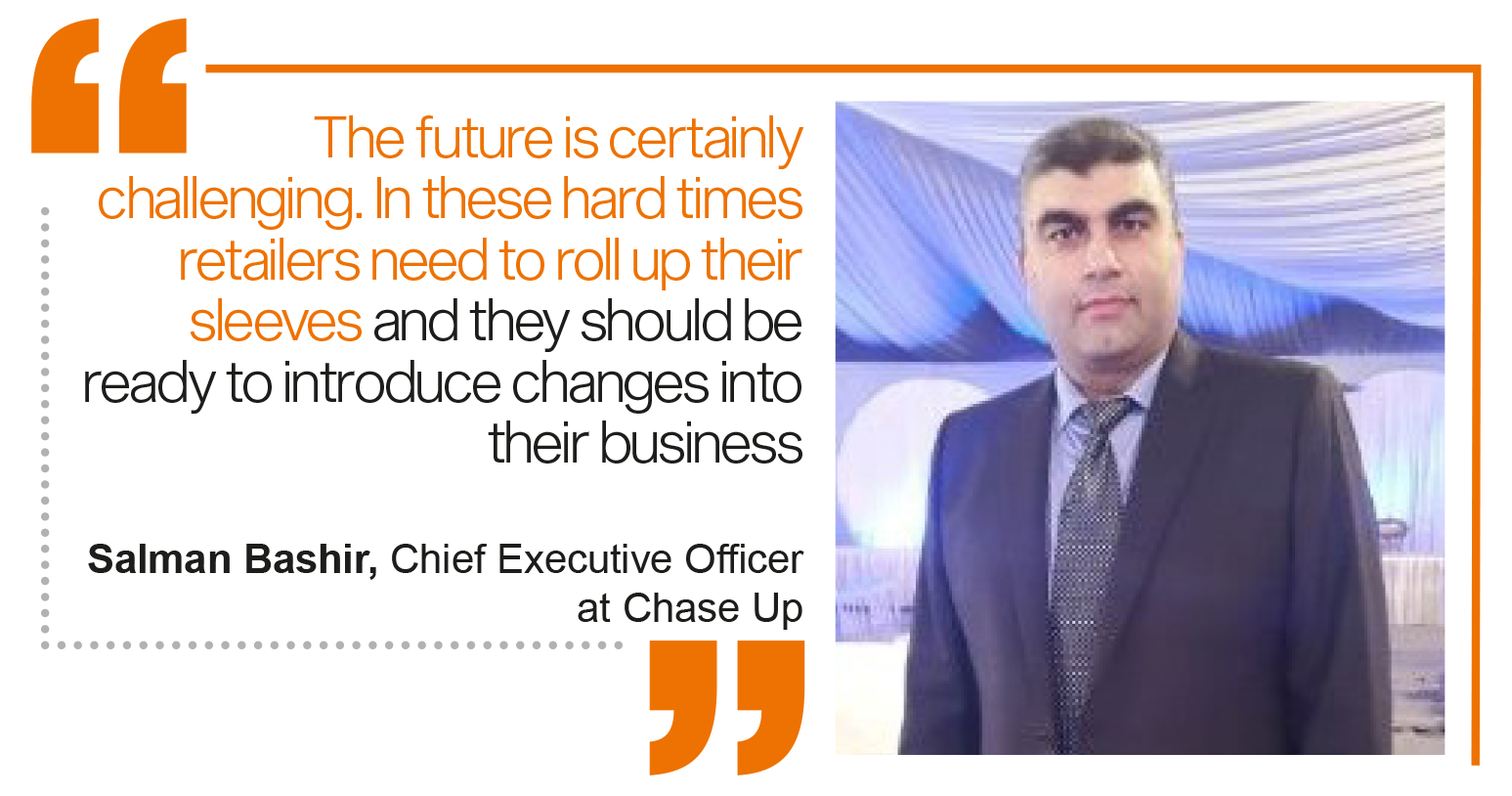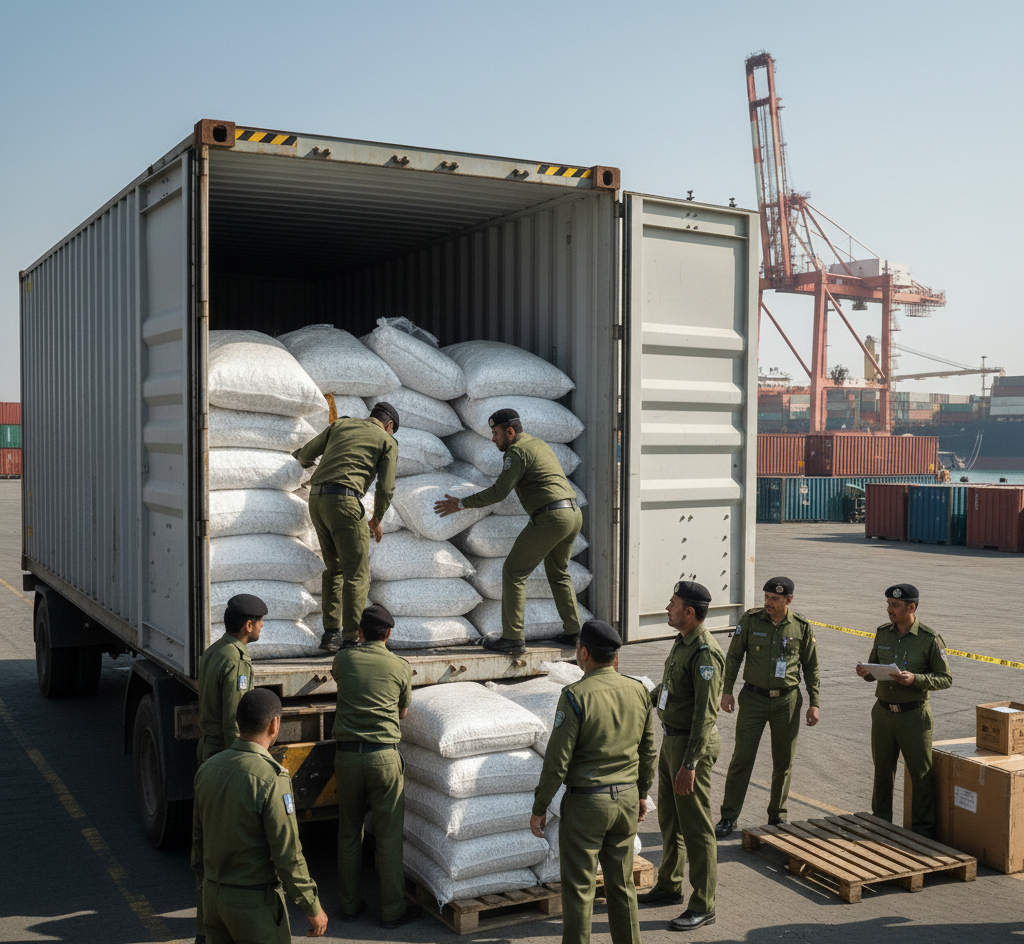Let’s cut to the chase. Inflation has gotten pretty bad in the past couple of years. For a litany of reasons prices have soared at double-digit inflation rates while wages have remained largely stagnant. This coupled with high unemployment because of an economic slowdown has meant the purchasing power of the families has fallen.
So what happens, dear reader, when people can’t buy things anymore? When they can’t afford as much as they once could? The answer is simple. People are still going to buy food, pay for utilities, and send their kids to school. Sure, they might get cheaper off-brand alternatives for groceries, or not turn their ACs on in the summer, or even send their children to more affordable schools but they won’t stop these expenses. Or at least they would be the last to go.
The first line of spending that is cut are luxury items. And since larger luxury items like cars and electronics are infrequent purchases as it is, the real effect that is immediately felt is in the retail sector. . This phenomenon is actually visibly seen all around us. Malls used to hold sales for a couple of weeks a season in order to boost their sales at the end of the season. What is seen now is sales which are lasting months on end with no sign of ending. Just how much has the retail sector suffered due to the economic downturn and is there an end in sight?
Shrinking purchasing power
Pakistan seems to be one country which has tried to sustain itself with little to no foresight and planning. After decades of fiscal mismanagement and external debt, the country has finally had to face its final reckoning. This came in the form of high inflation and depreciating currency leading to shrinking of the purchasing power of the people. The worrying fact for many families is that there are few signs that inflation is going to abate any time soon.

All these signs point towards the slowdown in the economy which will persist in 2024 and there might even be a contraction registered for FY 2024. At the end of 2022, 26% households were earning more than US $10,000 which is expected to fall to 19% by the end of 2027. Even though this seems like a small number,it would mean that 2.59 million households or around 16 million people will fall below the threshold of $10,000 in the coming years. All these fancy numbers mean that the consumer spending and ability to purchase products will fall.
Wages are sticky
It is a known fact that wages in Pakistan are sticky. Sticky wages are an economic concept describing how wages adjust slowly to changes in labor market conditions.As these wages are agreeably sticky downwards, employers are cautious before they increase wages as they are cognizant of the fact that there will be no revision downwards when it is time to cut their costs. Due to this, it is unlikely for a breadwinner to see a rise in wages on a regular basis.
In normal circumstances, this is not going to be problematic. As long as inflation stays low, the wages will be ample enough to cover all the necessary expenses. Since the height of 2014, inflation had been on a downward trend for Pakistan. Inflation rate touched a low of less than 3% in 2018 and was within a manageable range from 2014 till 2019.
The story after 2019, however, has been problematic to say the least. Due to increasing oil prices and devaluation of the currency, inflation was in double digits for 3 of the last 4 years and the rate touched a high of almost 30% at the end of 2023. The State Bank actually revised its projected inflation for the next fiscal year to be around 23 to 25% which was previously expected to be around 20 to 22%. Figures on a year on year basis came at 28.3% for January 2024.
Where the rubber meets the road
In order to put this into context, consider a family of five where the household income is around Rs 5 lakhs. In total, Pakistan has 3.7 crore households out of which more than half earn an average household income of Rs 5 lakhs. For many in the country, there has been little change over the level of wages since 2018. This means that they were earning around the same amount they are right now.
Taking a survey of a family of five, the basic costs associated with the household are groceries, education, fuel expenses, utilities and domestic help. In 2018, groceries including meat and vegetables would have come to around 1.3 lakh for a family of 5. With 3 school going children, education would have been around 1.2 lakh as well for a private education. Fuel cost was Rs 100 per litre in 2018 so fuel would have cost around Rs. 30,000. Domestic help would have cost around Rs. 40,000 for 2 individuals helping. Utilities would have roughly cost Rs 50,000 on an average monthly basis. Even if eating out expenses are added to this, the total cost can be stretched to Rs 3.75 to 4 lakhs for the month. This would have left over 20% of the income which could be spent on retail based expenses.

Clothes, shoes and other retail items could be bought by the family every month.
The same family now sees that the income cannot cover some of the basic expenses. Groceries and meat costs have increased to Rs. 1.7 lakhs. Education expenses have increased to around Rs 1.5 lakhs. Fuel costs have increased almost three folds to around Rs. 80,000. Similarly, domestic help is now being given Rs 50,000 while utility bills have doubled since 2018 to around 1 lakh per month. These come to a total cost of around Rs. 550,000. Even if an increment is considered from 5 lakh to 6 lakh for the household, which is highly unlikely, the leftover income is barely enough to cover any sort of retail based purchase.
Industry feeling the pinch
Even the representatives from the retail sector acknowledge how the demand has been impacted. Many experts of the industry say that demand was on the rise till 2019 before the pandemic hit in March 2020. This led to a sharp decline in business and household incomes which did not recover till 2021. The industry did see a spike in 2021 due to demand being on hold and monetary expansion in response to the pandemic.
However, as the inflation has taken hold, there is no growth seen in the industry which has led to either compromising on the quality or placing discounts in order to stimulate demand. Another factor that has hit the retail industry is the tax compliance that they have to adhere to. “Demand of goods sold by the tax-compliant organized retail sector has struggled due to taxes on this segment doubling over the past 4 years. Meanwhile, growth in the untaxed retail segment is very visible which indicates that the market is becoming increasingly lop-sided due to an unfair playing field” states Asfandyar Farrukh, Managing Director of Urban Brands and Co-Founder of Chainstore Association of Pakistan.
He further elaborates that since 2018, the industry has seen a discernible trend of falling demand which is due to inflation and economic slowdown. Even in these circumstances, one of the things that the industry can capitalize on is the unwavering loyalty of its consumers. This brand loyalty allows the brands to carry out shrink inflation by reducing pack sizes and have looked to use their brand name to pass on the cost onto the customers.
Raheel Meghani, Chief Executive Officer at Diamond Super Market, says that “In the ever-changing landscape of the economy, supermarket chains find themselves at the forefront, grappling with the impacts of inflation and a shifting consumer mindset. As the CEO of a supermarket chain with a presence in Karachi, I have witnessed firsthand the trends that have shaped our industry over the past few years.”

Some feel that there is no considerable demand shrinkage in the conventional sense, however, the industry is price sensitive. “We have witnessed that buyers have opted not to entirely refrain from retail purchases. Instead, they have reduced their basket size and opted for small ticket items to accommodate their shrinking buying power.” opines Mehvish Waliany,
Chief Operating Officer at Alkaram Studio.
Waliany also feels that as organized retailers are looking to cut down their prices, they are seeing a movement of customers who used to go towards unorganized retail and are now choosing more organized retailers. Similarly, individuals who do not generate formal taxable salary income have also stayed immune from the shrinkage in their purchasing power. As this income is turned towards retailers, they see steady turnover in terms of their sales.
Trend for the last five years
In terms of revenues and volumes, most of the industry has seen stagnation as their revenues have not grown in the past couple of years. As retail prices rise by 40 to 50% due to inflation and taxation, the customers are still spending the same amount on retail as they are constricted to increase it.
“In real terms, our revenues and volumes have remained stagnant over the past couple of years while retail prices have had to go up by 40-50% due to inflation and tax hikes, especially sales tax and income taxes for us compliant Tier-1 retailers. In addition, the sale of undocumented/smuggled goods has been at an all-time high over the past few years primarily because of pressure on businesses to sell cheaper goods by evading duties and taxes” adds Farrukh.There has been a drive to increase tax based revenues in recent years which has led to retailers being asked to comply with additional taxation based measures. According to an estimate, 20% of revenues generated by the retail sector go to the Government while the average for the country is half of that. This puts the formal sector of the economy at a huge disadvantage as retailers outside the purview of tax are able to keep lower prices.

The other side of the coin is the grocery and supermarket industry which has largely been unaffected by this trend. Meghani says that “the supermarket sector has proven to be recession-resilient, with consumers adapting to economic uncertainties by adjusting the quantity of their purchases. The challenge lies in managing the delicate balance between increasing turnover and decreasing quantities sold.”
Similarly, Salman Bashir, Chief Executive Officer at Chase Up states that “since we are discounters therefore the falling of demand is not an issue with us. In fact in hard times like these discounters fare better than many others. However those retail chains that operate in the mid to high price ranges are definitely complaining about the falling demand. Customers are extremely wary of the prices due to high electricity tariffs and fuel prices in particular”.
One fact that has developed over this period of time is that retailers are looking to place discounts on apparel and footwear brands that they see as catering to the mass market while trying to keep their luxury brands priced at the same levels. This has been done in order to stimulate demand for brands which are seen as more accessible and affordable while brands which are seen as luxury are kept at a higher price. ”Our apparel and footwear brands have had to discount merchandise almost every month in order to stimulate demand just to keep our heads above water while our luxury leather brand has refrained from doing so.” says Farrukh.
Short term solutions
The companies are also looking to make themselves lean in these challenging times. Brands have had to carry out an introspective move where they have decided to cut down on capital intensive measures like expanding into new stores or hold large inventories. This cuts down on the cost of production for the time being and also makes sure that these products will not have to be sold at a discount once they are produced. Once demand will rebound, these avenues can be considered by the brands for the future.
Companies have actually seen visually how demand has fallen in the past few years. Farrukh states how the footfall in his stores has decreased by at least 10 to 15% as customers are looking for discounts and sales. “Due to this pattern, our main strategy has been to improve our product quality and service offerings so that the customer gets better value for money but we still have to discount from time to time to achieve viable revenues.”
Waliany agrees with this sentiment saying that footfall to their stores has decreased but discounts and sales do lead to increase in customers visiting their stores. Meghani also states that his supermarket chain has been proactive in carrying out weekly price-offs at his stores in order to remain competitive and strike a balance between profitability and affordability.
Bashir runs a company which positions itself as a discount retailer and states that even though his sales have not been impacted, there is still a decrease in people visiting the stores. Goods like apparel have seen a rise in their price points which means it is difficult to attract customers relating to these products. Customers are actively looking for discounts in order to carry out these purchases and the retailers who are willing to place these discounts are seeing a rise in their sales only.
Future expectations
The industry sees that the uncertainty and economic downturn will continue for the time being as there is little chance of demand increasing. Due to inflation and tax burden, incomes of people have decreased and sales are expected to be stagnant till the end of 2024. In such an atmosphere, the retailers who are able to meet the customer needs and expectations will see better revenues which will be achieved with discounts in the near future.
The doom and gloom doesn’t just end there. With record high interest rates, Farrukh says that “the multi-faceted cost of doing business is expected to rise further which means that net margins will stay badly impacted therefore additional investments remain at a standstill. For us, it actually makes much more financial sense to just put money in the bank every year to earn a higher profit but that doesn’t create jobs or fuel business growth.”
At this point, companies are expecting the macroeconomic situation to persist with little optimism in terms of purchasing power improving. In the face of such challenges, they are looking to position themselves in a better manner to adapt to the situation and strike a balance between being resilient and affordable for the customers. Bashir outright says that “the future is certainly challenging. In these hard times retailers need to roll up their sleeves and they should be ready to introduce changes into their business.”
Industry experts feel that consumer purchasing power can be induced by decreasing local and global inflation. As interest rates are high and international prices have an impact on inflation, these two have to be controlled in order to provide some purchasing power back to the customers. Most of the industry feels that the situation will improve in the second half of FY 2024-2025.










It has become everyone’s issue in the country now.